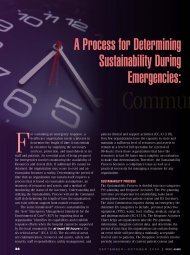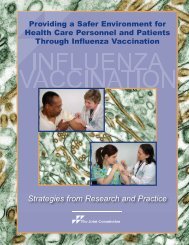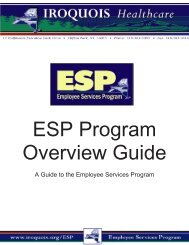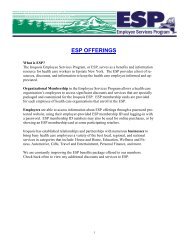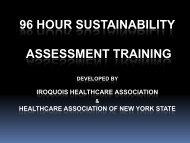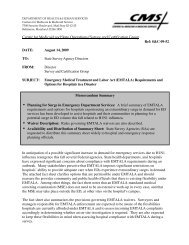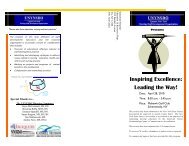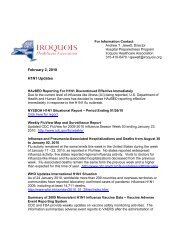NYS Public Health Legal Manual: A Guide for Judges, Attorneys ...
NYS Public Health Legal Manual: A Guide for Judges, Attorneys ...
NYS Public Health Legal Manual: A Guide for Judges, Attorneys ...
Create successful ePaper yourself
Turn your PDF publications into a flip-book with our unique Google optimized e-Paper software.
NEW YORK STATE PUBLIC HEALTH LEGAL MANUAL § 1.69<br />
Commentary<br />
There is ample authority in the <strong>Public</strong> <strong>Health</strong> Law, State Sanitary<br />
Code and New York City <strong>Health</strong> Code <strong>for</strong> local health officers to<br />
enter onto private property to investigate sources of contagious diseases<br />
that may be dangerous to the public health, to abate or remove<br />
objects as required, and to prevent entry into or exit from those premises.<br />
See, e.g., PHL §§ 2100(1) [authority to exercise “proper and<br />
vigilant medical inspection and control of all persons and things”];<br />
2100(2)(b) [authority to prohibit “communication with or use of the<br />
infected property” and to provide <strong>for</strong> a “thorough purification and<br />
the cleansing of” the property]; 10 NYCRR § 2.6(a) [authority to<br />
conduct an “investigation as the circumstances may require”];<br />
<strong>Health</strong> Code [24 RCNY] § 11.03(e) [New York City <strong>Health</strong> Department<br />
has authority to “conduct such surveillance, epidemiologic and<br />
laboratory investigative activities” and to “implement public health<br />
measures to control the disease”]. As with the authority of local<br />
health officers to implement processes <strong>for</strong> isolation and quarantine,<br />
local health officers may fill in any gaps in the applicable provisions<br />
of these statutes and rules through the exercise of their common law<br />
police powers. See supra, Commentary to IV(I)(1).<br />
The <strong>Public</strong> <strong>Health</strong> Law, and the New York City <strong>Health</strong> Code and<br />
New York City Administrative Code, similarly contain procedures<br />
addressing public nuisances and permitting the abatement of<br />
conditions dangerous to life or health. PHL § 1303; <strong>Health</strong> Code [24<br />
RCNY] § 3.03; NYC Admin. Code § 17-145. These conditions go<br />
beyond contagious diseases and can be used to address, e.g.,<br />
radiological or chemical contamination that poses an immediate<br />
health threat to the public. While the procedures governing<br />
nuisances in Article 13 of the PHL are addressed to conditions that<br />
are essentially created by the owner (or occupier) of the property<br />
and that are required, after due notice, to be abated by that owner at<br />
the owner’s expense, Article 13 should not be read as restricting<br />
local health officers from taking immediate action pursuant to their<br />
police powers to enter and seize property where the danger to the<br />
public health so requires. See supra, Commentary to IV(I)(1). See<br />
also PHL § 1303(3) [“Every local board of health shall order the<br />
37




